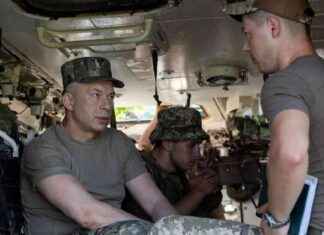In a recent military development, Ukraine has made significant strides in innovation by becoming the first country to utilize 1000-pound JDAM-ER guided bombs in combat. This groundbreaking advancement was showcased in combat footage, where a Ukrainian Soviet-era Su-27 heavy fighter successfully released two guided bombs, striking Russian targets with precision and effectiveness. This move marks a significant shift in the ongoing Russo-Ukrainian conflict, highlighting Ukraine’s commitment to leveraging cutting-edge technology to defend its territory and push back against Russian aggression.
Frontline Dynamics: Battles and Strategies
Amidst escalating tensions, recent reports indicate a complex landscape of military operations in the region. Ukrainian forces have successfully pushed Russian troops back from forward positions near Borova in Kharkiv oblast, showcasing their resilience and tactical prowess. Meanwhile, Russian advances have been noted near Kupiansk, Borova, and in multiple locations in Donetsk Oblast, underscoring the volatile nature of the conflict.
Despite these developments, the Institute for the Study of War (ISW) reports that Russian advances have slowed down, despite the high casualty rates sustained by Russian forces. In January alone, Russia lost 96 soldiers per seized km², marking the second-highest monthly casualty rate after December. These figures shed light on the human cost of the conflict and the challenges faced by both sides as they navigate the complexities of modern warfare.
Intelligence and Technological Advancements
In the realm of intelligence and technology, Ukraine continues to demonstrate its commitment to innovation and military modernization. Ukrainian robotic grenade-launcher turrets have entered serial production, with the Buria carrying the Mk 19 belt-fed automatic grenade launcher, providing Ukrainian forces with enhanced capabilities on the battlefield. Additionally, Ukrainian war veterans with prosthetics recently embarked on a remarkable journey to raise a 6-meter national flag at the peak of Kilimanjaro, symbolizing their resilience and determination in the face of adversity.
Furthermore, Ukraine’s spy chief has revealed that nearly 8,000 North Korean soldiers are still actively engaged in combat operations in Russia’s Kursk Oblast, despite suffering heavy losses. This revelation sheds light on the complex alliances and dynamics at play in the conflict, underscoring the international dimensions of the Russo-Ukrainian war.
On the technological front, Ukraine’s FPV “air defenses” have proven effective in slashing Russian drone reconnaissance capabilities. By utilizing FPV drones to shoot down enemy reconnaissance drones, Ukrainian forces have significantly disrupted Russian surveillance efforts, gaining a strategic advantage on the battlefield.
Amidst these advancements, Forbes reports that Ukrainian “lurk-and-strike” FPV drones have been instrumental in executing high-profile assassinations behind Russian lines. These lethal ambush weapons have been deployed with precision, striking targets from concealed positions along Russian supply routes, showcasing Ukraine’s innovative tactics in asymmetric warfare.
These developments underscore the evolving nature of the conflict and the critical role that technology and intelligence play in shaping the outcome of the war.
International Diplomacy and Humanitarian Impact
In the realm of international diplomacy, Ukraine is navigating a complex landscape of alliances and negotiations as it seeks support from key allies. Germany has shown strong support for military aid to Ukraine, with 67% of Germans backing assistance to the embattled nation. This solidarity highlights the global significance of the conflict and the interconnectedness of geopolitical interests at play.
Meanwhile, Israeli Prime Minister Netanyahu has expressed interest in securing US weapons for possible strikes on Iran’s nuclear sites, underscoring the broader implications of the conflict for regional stability and security.
On the humanitarian front, Ukraine continues to grapple with the devastating impact of the war on its civilian population. Recent reports indicate that a Russian missile strike on central Izium resulted in the loss of four lives and injuries to 20 civilians, highlighting the human cost of the conflict. Additionally, UN monitors have documented an “alarming rise” in Russian executions of Ukrainian prisoners of war, underscoring the need for international intervention to protect vulnerable populations and uphold human rights.
As the conflict rages on, Ukraine remains at the forefront of global attention, grappling with the complexities of war, diplomacy, and humanitarian crises. The country’s resilience and determination in the face of adversity serve as a testament to the indomitable spirit of its people and the challenges they continue to confront on a daily basis.

















